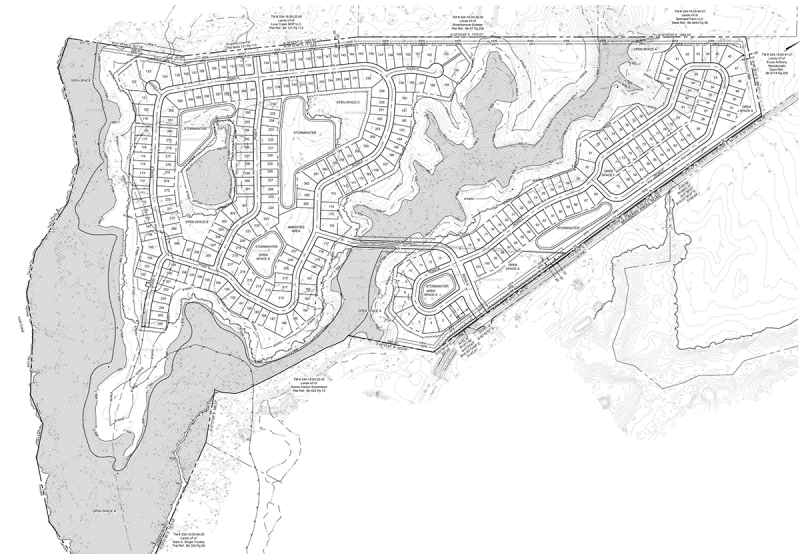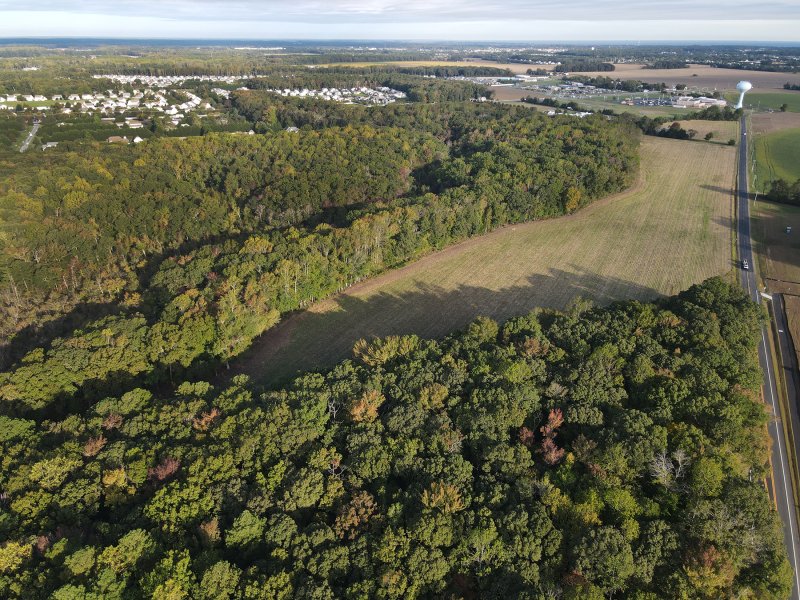State agencies raised concerns Oct. 29 about flooding risks, an access road and tree removal for a proposed project to build 307 houses on Mulberry Knoll Road near Rehoboth Beach.
The points concerning the 257-acre Goldsboro Farm project were raised at a meeting of the state Preliminary Land Use Service.
The site is adjacent to the proposed Belle Mead project near Route 24 that includes 344 residential units. Sussex County Council is scheduled to consider a rezoning request for Belle Mead Tuesday, Nov. 4.
Beth Krumrine, a principal planner for the Delaware Department of Natural Resources and Environmental Control’s Division of Climate, Coastal and Energy, said her agency has several concerns about the Goldsboro Farm project.
Krumrine said 57 lots, 18% of the project, are located in the 100-year floodplain, and another 35 are in a 500-year floodplain. With anticipated sea level rise, that will become more of a threat on portions of the site in the future, she said.
She said DNREC is also concerned about plans to clear 57 acres of forest and the possible presence of the tricolored bat, an endangered species.
Mike Lowrey, a Sussex County planner, said the county has concerns about emergency vehicle access through some portions of the development, which would be reached by a single road that runs through wetlands.
Rose Zappacosta, a planner for the Office of State Planning Coordination, said most of the property is suited for development, and the plans there are consistent with state development goals.
During the public comment session, two neighbors said they worry about the cumulative effect of development in the area on traffic.
Judy-Rose Siebert of Lewes noted Mulberry Knoll Road traffic empties onto Route 24, where there is much development and traffic, and the road narrows to the south.
She said Belle Mead and Atlantic Fields, a nearly 650,000-square-foot commercial development proposed at the corner of Route 24 and Mulberry Knoll Road, would add to traffic congestion.
“Living here every day, you see the effect of all this building,” said Katie Pfiefer, who lives on the southern end of Mulberry Knoll Road.
Other business
Cedarcrest, a proposed development of 650 single-family homes on 471.6 acres west of Georgetown, also drew concerns about flooding from state agencies.
Krumrine cautioned that 200 lots would be in the 100-year flood plain. While that area would be raised, she discouraged the developer from building in the floodplain.
Mike Riemann, an engineer representing the developer, said he’s aware of the floodplain, and the project would be designed to address those concerns.
The number of trees removed should also be kept at a minimum, Krumrine said.
Warrington Road, which runs through the site, would be abandoned to make way for the project, Riemann noted.
Carlton Hall Jr., a cultural preservation specialist and historian with the state Historic Preservation Office, requested an archaeological survey because a church once stood on the site, and there could be an unmarked graveyard.
Zappacosta said the Office of State Planning Coordination does not support the plan because the site is not in a location where it has anticipated development to occur.
Environmental issues were raised about plans to build 105 single-family houses on the 150.6-acre Robbins Property near Milford. Zachary Crouch, an engineer for the developer, said each lot would have a private well and septic system.
DNREC raised concerns about the loss of 87 acres of forest, or 70% of the total, and the potential for pollution from septic systems.The agency suggested advanced treatment systems be installed.
The federally protected tricolor bat species may also be present on the site, according to DNREC. The site is zoned AR-1, agricultural-residential, and is located in state investment levels 2, 3 and 4.
Kevin Conlon came to the Cape Gazette with nearly 40 years of newspaper experience since graduating from St. Bonaventure University in New York with a bachelor's degree in mass communication. He reports on Sussex County government and other assignments as needed.
His career spans working as a reporter and editor at daily newspapers in upstate New York, including The Daily Gazette in Schenectady. He comes to the Cape Gazette from the Cortland Standard, where he was an editor for more than 25 years, and in recent years also contributed as a columnist and opinion page writer. He and his staff won regional and state writing awards.
Conlon was relocating to Lewes when he came across an advertisement for a reporter job at the Cape Gazette, and the decision to pursue it paid off. His new position gives him an opportunity to stay in a career that he loves, covering local news for an independently owned newspaper.
Conlon is the father of seven children and grandfather to two young boys. In his spare time, he trains for and competes in triathlons and other races. Now settling into the Cape Region, he is searching out hilly trails and roads with wide shoulders. He is a fan of St. Bonaventure sports, especially rugby and basketball, as well as following the Mets, Steelers and Celtics.
























































